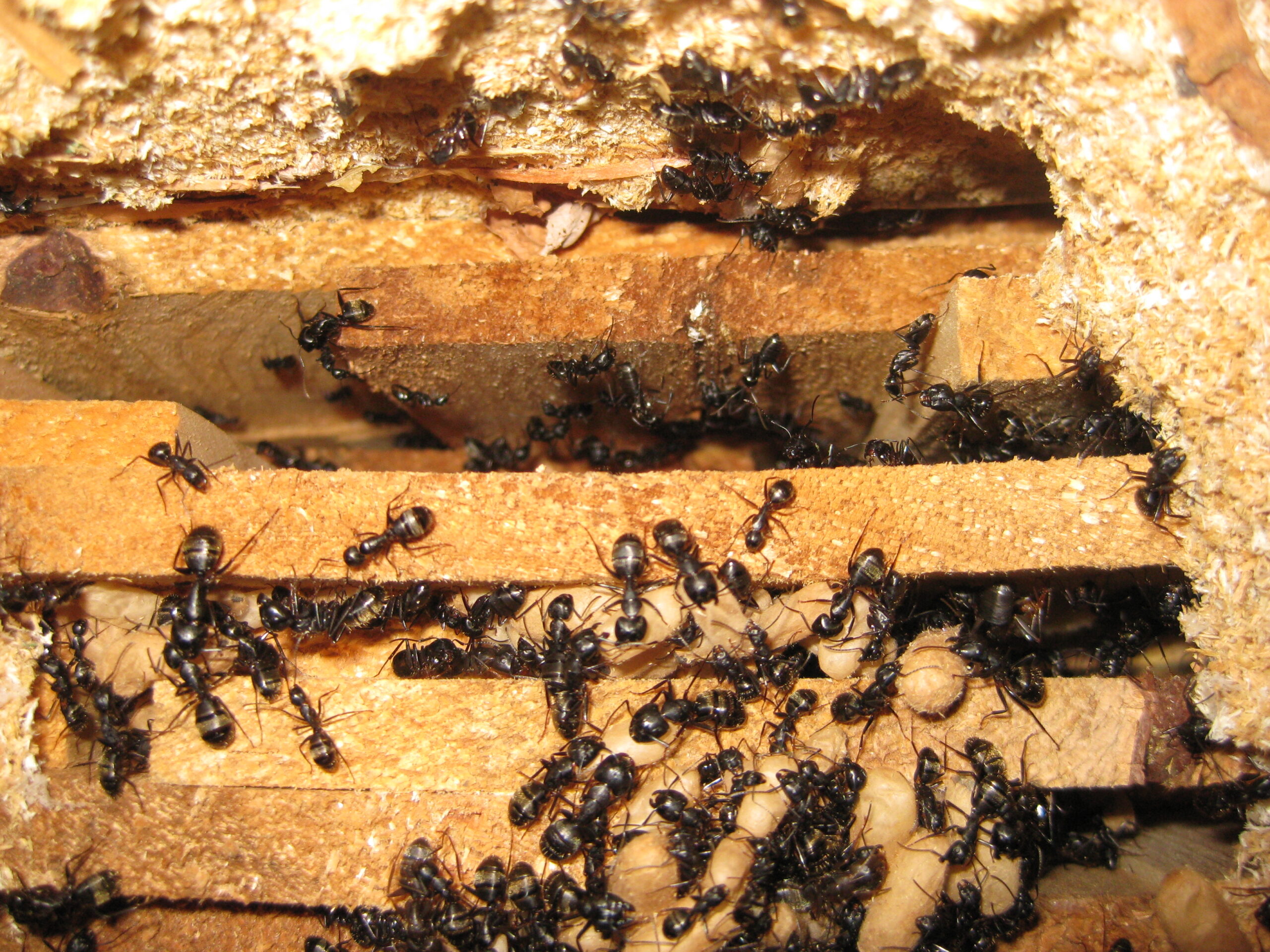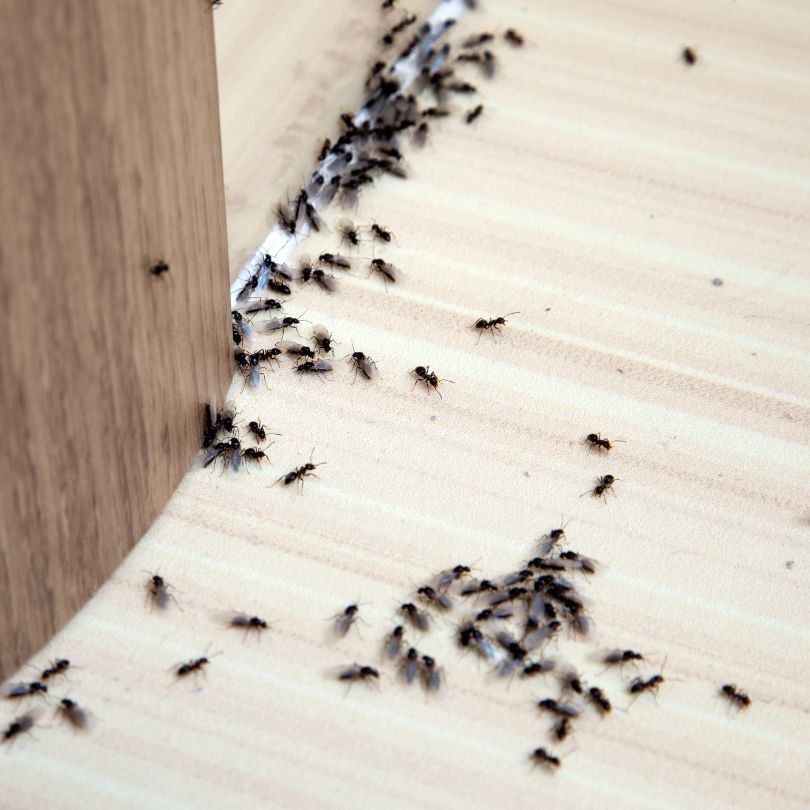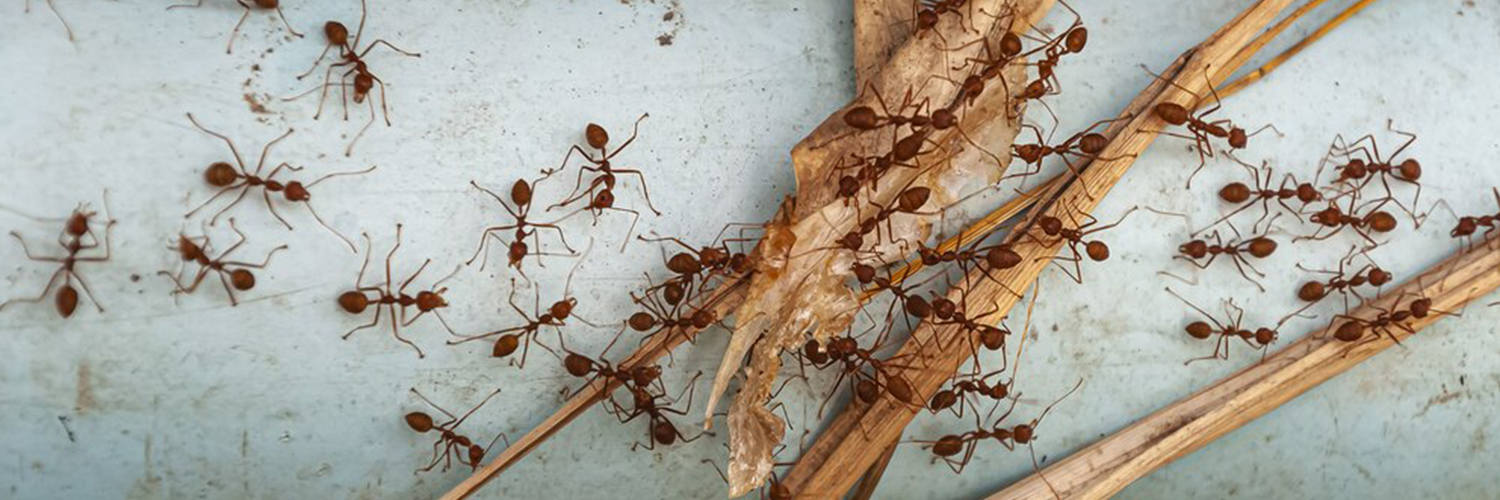Ant Extermination Services in Daytona Beach
Helping You Reclaim Your Florida Home from Persistent Pests
When you think of Daytona Beach, images of sunlit shorelines, cool ocean breezes, and a lively coastal culture probably come to mind. But for those living in this scenic region along Florida’s Atlantic coast, there’s another fact of life that’s far less appealing: ants. Thanks to the area’s warm climate, high humidity, and abundant vegetation, Daytona Beach offers the perfect environment for ant colonies to grow and spread year-round. A seemingly small ant issue—like a few wanderers in the kitchen—can quickly balloon into a full-blown infestation if left unaddressed.
This page will explain why ants flourish in Daytona Beach, outline the common ant species you’re likely to encounter, and provide a step-by-step approach for effective extermination. We’ll also touch on Ormond Beach, a nearby coastal city facing similar ant challenges, so that residents throughout this region can keep their homes and businesses comfortably pest-free.
Why Daytona Beach’s Climate Fosters Ant Populations

Florida is famous for its mild winters and near-tropical environment, making it a magnet for both tourists and insects. Daytona Beach, in particular, stands out for its balmy weather and humidity, all of which help ants thrive:
- Year-Round Warmth
In colder parts of the country, ants slow down or die off during frigid winter months. Daytona Beach rarely dips into freezing temperatures, allowing ant colonies to remain active, foraging and reproducing constantly. - High Humidity
The coastal air, frequent rainfall, and general moisture in Florida mean ants have easy access to water. Whether it’s morning dew on leaves or puddles left after an afternoon storm, ants seldom struggle to find the hydration they need to survive. - Bountiful Food Sources
Outdoor barbecues, beach picnics, and even local restaurants can leave behind crumbs, spills, or trash that ants quickly exploit. Any accessible morsel or sugary drop invites more ants to join in. - Vegetation and Shelter
Daytona Beach neighborhoods often boast vibrant landscaping—tropical flora, palm trees, and meticulously kept lawns. While beautiful, these green spaces also serve as hidden corridors for ants to build nests close to homes or businesses.
Without colder temperatures to curb their growth, ants in this region can expand colonies with few natural barriers. Residents frequently observe multiple ant species coexisting and occasionally competing for territory on the same property.
Six Common Ant Species in Daytona Beach
Although dozens of ant species live in Florida, a few emerge as the primary culprits when it comes to residential and commercial invasions. Knowing which type you’re dealing with helps you decide the best extermination tactic:
- Ghost Ants
- Appearance: Extremely small, with dark heads and almost translucent abdomens, giving them an elusive, “ghostly” look.
- Behavior: Drawn to sweet foods and comfortable hiding spots near moisture, such as kitchens and bathrooms. Ghost ants can establish large, widespread colonies indoors.
- Concerns: These ants don’t cause structural damage, but they can multiply rapidly, contaminate kitchen surfaces, and be difficult to spot until the infestation is substantial.
- Carpenter Ants
- Appearance: Larger ants that are typically black or red-and-black in color.
- Behavior: They tunnel through damp or decaying wood to form nests (rather than eating it like termites). Due to the humidity, wood around windows, door frames, or roofs can easily become moist, tempting carpenter ants to move in.
- Concerns: Over time, carpenter ants can undermine wooden supports. If the colony grows, it can affect the stability of wooden beams and other structural components in a home.
- Fire Ants
- Appearance: Reddish-brown ants that construct distinctive mounds in lawns, gardens, or other sunny spots.
- Behavior: Infamous for their aggressive nature and painful stings, fire ants swarm in large numbers when their mound is disturbed. They often build colonies in open, sunny areas.
- Concerns: Fire ant stings can produce painful welts, posing particular risks for children, pets, and individuals with sensitivities to insect venom. Multiple mounds can make outdoor areas effectively unusable.
- Pharaoh Ants
- Appearance: Tiny and yellowish, easy to overlook if you’re not searching for small ants.
- Behavior: Known for budding, Pharaoh ants split off into new satellite colonies when threatened—especially if someone uses a repellent spray. They typically favor warm, moist sites within buildings.
- Concerns: DIY sprays can worsen the infestation by causing the colony to break apart. Proper baiting strategies are essential to eliminate Pharaoh ants at their source.
- Argentine Ants
- Appearance: Medium-sized, dark brown ants that frequently travel in large, visible trails along walls or foundations.
- Behavior: Argentine ants can create supercolonies boasting multiple queens. They like damp soil near ornamental plants, mulch, or leaf debris.
- Concerns: Their massive population size makes them resilient to half-hearted treatments. Left unchecked, these ants can dominate a property and push out other local ant species.
- White-Footed Ants
- Appearance: Notable for lighter-colored legs contrasting with darker bodies.
- Behavior: Often nesting in roof eaves or wall voids, these ants seek sugary substances indoors. While they don’t eat wood, large colonies can establish long trails through kitchens and pantries.
- Concerns: The scale of their colonies can be overwhelming, forcing homeowners to address ongoing lines of ants that reappear if not entirely eradicated.
Each species presents unique challenges. Recognizing an infestation early and knowing which control method fits best can save a lot of time and stress.
Rapid Growth of Ant Infestations
One reason ant problems can escalate quickly in Daytona Beach is the phenomenon of pheromone trails. As worker ants find food or water, they leave chemical signals guiding other ants to the resource. In Florida’s warm, humid conditions, these trails remain potent for longer, giving ants ample time to form large foraging parties.
Additionally, many ant colonies in Florida have multiple queens. If you eliminate one nest section, other queens can relocate, forming new satellite colonies. This is why piecemeal solutions—like spraying a line of ants without addressing the nest—often fail to provide lasting relief.

Health and Comfort Implications
A significant ant infestation can create more than just inconvenience:
- Risk of Painful Stings: Fire ants, in particular, can transform a family barbecue or a child’s playtime in the yard into a painful experience.
- Contamination: Ants scouring garbage or other unsanitary sites can transport bacteria to your kitchen counters or dining areas.
- Structural Damage: Carpenter ants may cause gradual harm to wooden components, leading to costly repairs if the problem remains hidden.
- Stress and Inconvenience: Constant lines of ants are off-putting, making routine household tasks more complicated. They can also harm the reputation of businesses like hotels or restaurants.
A Multi-Pronged Extermination Strategy
Since no two infestations are exactly alike, successful ant extermination in Daytona Beach typically involves a combination of methods:
- Inspection and Identification
- Determine which species is present by analyzing the ants’ color, size, and foraging patterns.
- Inspect your property thoroughly—indoors and out—to locate trails, nesting areas, or moist spots that encourage ant activity.
- Baits and Non-Repellent Treatments
- Baits: Slow-acting poisons lure ants to take the substance back to the colony, effectively killing workers and queens. This tactic is especially crucial for ghost ants or Pharaoh ants prone to scattering.
- Non-Repellent Sprays: Used along high-traffic ant areas, these sprays kill ants that cross treated zones but don’t repel them outright, ensuring they spread the product back to the nest.
- Direct Mound Treatments
- Specifically for fire ants, which build visible earthen mounds in sunny spots. Specialized mound treatments target the queen to stop the colony from relocating or resurging.
- Eliminating Pheromone Trails
- Thorough cleaning with household products can neutralize chemical signals.
- Focus on counters, baseboards, and other surfaces where ants have been spotted.
- Sealing Off Entry Points
- Caulk cracks or gaps around windows, doors, and the foundation.
- Repair any torn screens or loose weather-stripping.
- Trim back foliage touching exterior walls to reduce easy pathways.
- Moisture Control
- Promptly fix leaks and dry out damp areas. Even minor drips under sinks can maintain an ant nest.
- Ensure gutters direct water away from your home, preventing pooled moisture at the foundation.
- Ongoing Monitoring
- Keep an eye out for new trails or small signs of ant presence. Catching re-invasions early can prevent them from becoming major problems again.
- Inspection and Identification

Preventive Measures for Long-Term Relief
Once you’ve tackled an infestation, maintaining a few best practices can keep future ant problems at bay:
- Clean Spills Promptly: Whether it’s a sticky beverage or a bit of sauce on the floor, ants zero in on any leftover food residue.
- Use Airtight Storage: Pantry staples, cereals, and sweets should remain sealed, denying ants an easy meal.
- Manage Trash and Compost: Seal outdoor garbage bins tightly and clean them periodically. Indoor trash should be emptied regularly.
- Yard Upkeep: Mow lawns, rake leaves, and position mulch at least a foot away from the foundation. Ants often nest in organic debris near the home.
- Check Outdoor Water Sources: Hoses, sprinklers, and kiddie pools can create constant dampness that ants find inviting.
These small, everyday habits can significantly reduce the odds of a repeat infestation, especially in a climate as favorable to ants as Daytona Beach’s.
Coverage in Ormond Beach
Moving just north along the coast brings you to Ormond Beach, another picturesque city that faces much the same challenge when it comes to ants. With a similar subtropical setting, year-round tourism, and lush residential areas, Ormond Beach is equally prone to encounters with ghost ants, fire ants, and other problem species.
- Proximity to Water: The Halifax River and the Atlantic Ocean ensure humidity remains high, making it all the more important to address leaks and standing water.
- Popular Outdoor Spaces: Parks, trails, and golf courses often see foot traffic that can spread food scraps or garbage, giving ants fresh feeding opportunities.
- Well-Maintained Neighborhoods: Just like in Daytona Beach, well-groomed lawns and attractive landscaping provide hidden routes for ants to infiltrate properties.
Residents of Ormond Beach benefit from the same multi-layered approach to ant extermination. With targeted treatments, sealing of entry points, and diligent yard management, it’s possible to keep ants at bay year-round.
When Professional Intervention Is Best
Although small-scale issues might be managed with diligent cleaning and store-bought baits, certain red flags suggest calling a professional:
- Widespread Fire Ant Mounds: Multiple, large mounds can be dangerous for pets and children.
- Structural Worries: Discovering carpenter ant activity around wood beams or behind walls is a sign you may need thorough inspection and specialized treatments.
- Recurring or Stubborn Infestations: If ants return repeatedly or appear to spread in multiple directions, it could indicate multiple queens or satellite colonies.
- Commercial & Hospitality Venues: Restaurants, hotels, and other service industries often require immediate and discreet pest management to uphold health standards and customer satisfaction.
Expert pest technicians can accurately identify the species, confirm how widespread the issue is, and use professional-grade methods not commonly found in retail products. This can prevent scattering or partial elimination, offering a more permanent solution.
Enjoying a Pest-Free Coastal Lifestyle
Daytona Beach’s sun and surf attract residents and visitors year after year. By keeping ants from overrunning your home, you can fully appreciate what this coastal paradise has to offer. A proactive approach that combines thorough extermination and consistent preventive measures will serve you well, whether you’re in the bustling heart of the city or a quiet suburb near Ormond Beach.
Here’s a quick recap:
- Know the Species: Different ants respond best to different strategies. Identify whether you’re dealing with ghost ants, fire ants, carpenter ants, or another common species.
- Remove Attractants: Wipe up crumbs, store food in airtight containers, and address moisture sources.
- Close Entry Points: Seal cracks, repair screens, and trim vegetation away from walls.
- Stay Alert: Monitor for new activity. If ants resurface in large numbers, don’t wait to take action.
- Consult Professionals: Complex or repeated infestations, especially those involving potentially dangerous fire ants or damaging carpenter ants, often need specialized expertise.
Whether you’re relaxing at the beach or hosting a get-together in your backyard, a home free from ants offers one less worry in your day-to-day routine. By following best practices for pest control, residents of Daytona Beach and Ormond Beach alike can look forward to a healthier, more comfortable environment—without the unwelcome company of ant colonies marching through their homes.
